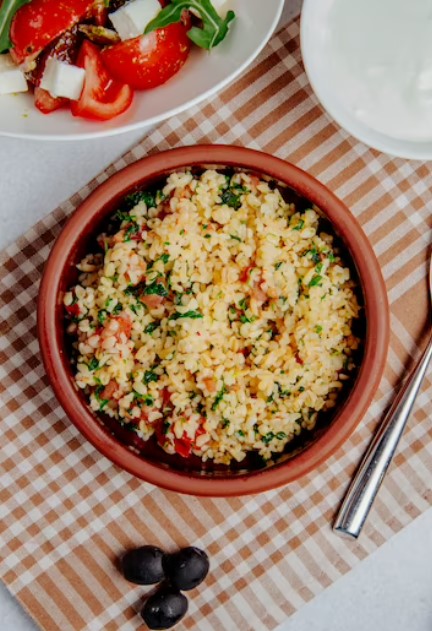Peru is a country with a rich and diverse culinary landscape that has captivated food lovers from around the world. With a unique blend of indigenous, Spanish, African, and Asian influences, Peruvian cuisine is a fascinating fusion of flavors, ingredients, and techniques. In recent years, Peru has become an increasingly popular destination for culinary tourism, attracting travelers who are eager to explore the country’s rich gastronomic offerings. In this article, we’ll take you on a culinary adventure through Peru’s rich tourism landscape, from the bustling streets of Lima to the remote corners of the Andes and the Amazon. Join us as we discover the unique ingredients, dishes, and culinary experiences that make Peru a must-visit destination for foodies. Whether you’re a seasoned traveler or a food lover looking to explore a new culinary frontier, this article is sure to whet your appetite and inspire you to plan your next trip to Peru.

The Diversity of Peruvian Cuisine
Peruvian cuisine is a melting pot of cultures and influences, each contributing their unique flavors, ingredients, and cooking techniques. Indigenous ingredients like quinoa, potatoes, and corn have been a cornerstone of Peruvian cuisine for centuries, while the Spanish brought over their culinary traditions and introduced new ingredients like tomatoes, peppers, and citrus fruits. African slaves also played a significant role in shaping Peruvian cuisine, bringing with them their own cooking techniques and spices that can be seen in dishes like carapulcra and tacu tacu.
Additionally, Peruvian cuisine has been heavily influenced by Asian immigration, particularly from Japan and China, resulting in dishes like ceviche with soy sauce and lomo saltado, a stir-fry made with beef and served with rice.
Some of the most popular and unique Peruvian ingredients include ají amarillo, a bright yellow pepper that adds a spicy kick to many dishes, and huacatay, a minty herb that is often used in sauces and stews. Popular Peruvian dishes include ceviche, a citrus-marinated raw fish dish that is a must-try when visiting Peru, and anticuchos, skewers of marinated meat that are grilled and served with potatoes and a spicy sauce.
Other noteworthy dishes include causa, a potato-based dish often filled with avocado and seafood, and rocoto relleno, a spicy stuffed pepper that is a staple of Peruvian cuisine.
Lima: The Gastronomic Capital of the Americas
Lima, the vibrant capital city of Peru, has been hailed as the gastronomic capital of the Americas, thanks to its world-renowned dining scene and the sheer variety of culinary experiences it has to offer. The city’s rise as a foodie destination is due in part to the efforts of talented chefs and restaurateurs who have sought to elevate Peruvian cuisine to new heights, and in doing so, have put Lima on the map as a culinary hotspot.
Visitors to Lima can experience a range of dining options, from hole-in-the-wall cevicherias to upscale fusion restaurants that blend traditional Peruvian flavors with international influences. Some of the top restaurants to visit in Lima include Maido, which is known for its Nikkei cuisine, a fusion of Peruvian and Japanese flavors, and Central, which has been named one of the world’s 50 best restaurants for its inventive take on traditional Peruvian ingredients and dishes. Other noteworthy restaurants include La Mar, which is renowned for its ceviche and seafood dishes, and Astrid y Gastón, which offers a fine dining experience that celebrates the diversity of Peruvian cuisine.
For those who prefer a more casual dining experience, Lima’s street food scene is not to be missed. Markets like Mercado de Surquillo and Mercado de San Isidro offer a dizzying array of local specialties, from grilled anticuchos to fresh juices made with exotic fruits like lucuma and chirimoya.
Regional Cuisine: From the Andes to the Amazon
Peruvian cuisine is as diverse as the country’s geography, and each region boasts its unique culinary traditions and flavors. From the Andes Mountains to the lush Amazon rainforest and the Pacific coast, Peru’s regional cuisine offers a diverse range of ingredients and dishes that are a true delight for the senses.
The Andes region is known for hearty stews and dishes that utilize ingredients like potatoes, corn, and quinoa, which are essential to the local cuisine. Must-try dishes in this region include pachamanca, a traditional dish cooked in a pit oven with marinated meat, potatoes, and herbs, and chupe de camarones, a shrimp chowder made with a rich base of milk, potatoes, and cheese.
In the Amazon region, exotic ingredients like jungle fruits, fish, and wild game are commonly used, resulting in bold and flavorful dishes. One popular dish is juanes, a dish of rice, chicken, and spices that is wrapped in banana leaves and cooked. Another must-try dish is tacacho, a side dish made from mashed green plantains mixed with pork rinds and served with grilled meat or fish. And of course, you cannot miss the opportunity to try arroz chaufa (you can also make it at home following this recipe: https://carolinarice.com/recipes/arroz-chaufa/).
On the coast, the cuisine is heavily influenced by seafood, with dishes like ceviche and tiradito being among the most popular. Other noteworthy dishes include arroz con mariscos, a flavorful rice dish made with a variety of seafood, and causa rellena, a layered dish made with mashed potatoes, avocado, and seafood or chicken.

Culinary Tourism in Peru
Peru’s rich culinary heritage and diverse regional cuisine have made it a top destination for food-focused travelers. Culinary tourism in Peru has seen tremendous growth in recent years, with visitors eager to explore the country’s food culture and learn from local chefs and artisans.
One popular way to experience Peruvian cuisine is through food tours, which offer travelers the opportunity to sample local dishes and ingredients, and learn about the history and cultural significance of each dish. Food tours can range from street food crawls in Lima to multi-day culinary adventures that take travelers into the heart of the Andes or the Amazon.
Cooking classes and culinary workshops are another popular option for travelers looking to deepen their understanding of Peruvian cuisine. These classes can range from quick demonstrations of popular dishes to in-depth courses that cover the entire cooking process, from sourcing ingredients to plating the final dish.
For those looking for a more immersive experience, farm-to-table tours offer a unique opportunity to explore the origins of Peruvian cuisine. These tours take travelers to local farms and markets, where they can see firsthand how ingredients are grown and harvested, and learn about the different culinary traditions and techniques used in different regions of the country.
When planning a culinary-focused trip to Peru, it’s important to do your research and find reputable tour operators and cooking schools. It’s also a good idea to try to learn some basic Spanish phrases to help you navigate local markets and communicate with chefs and locals.
